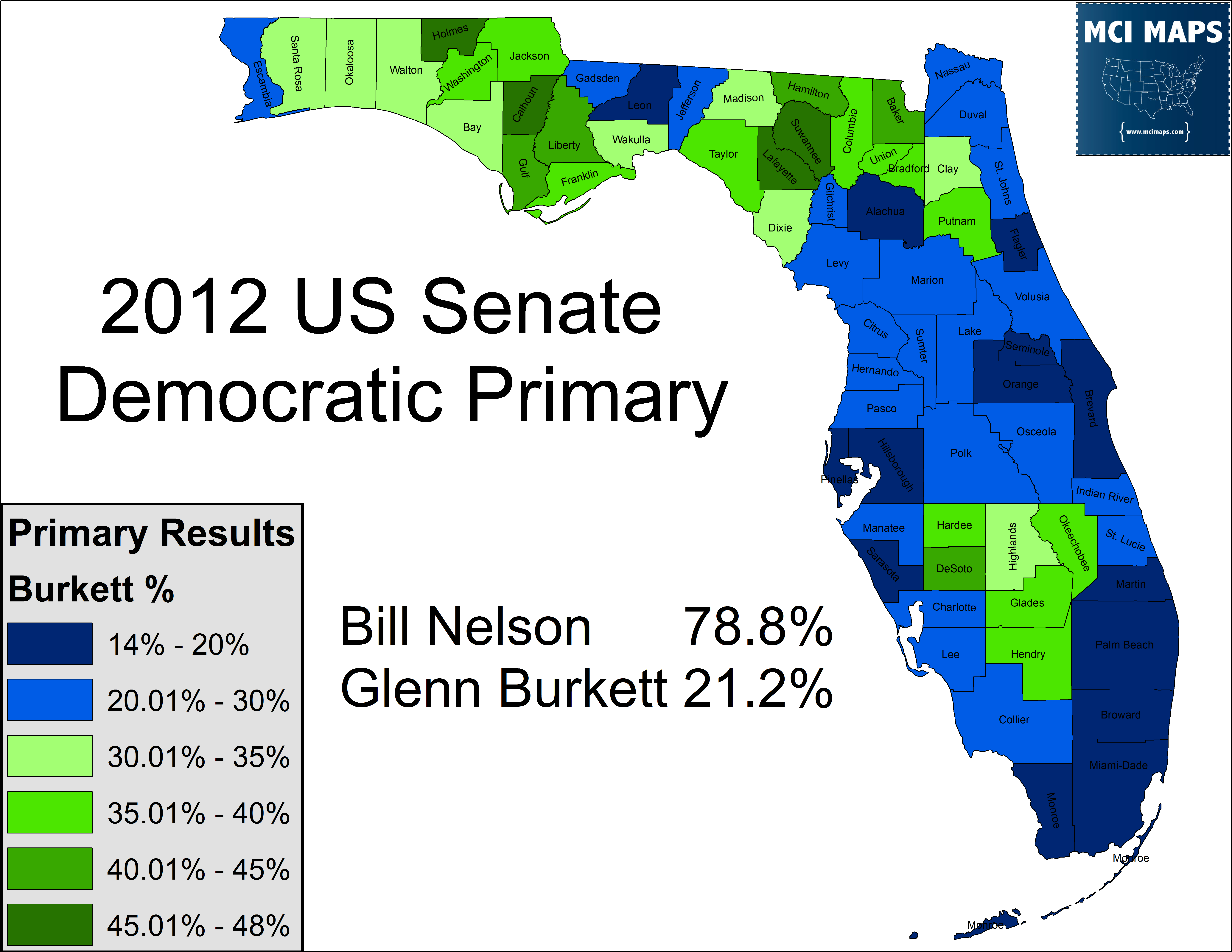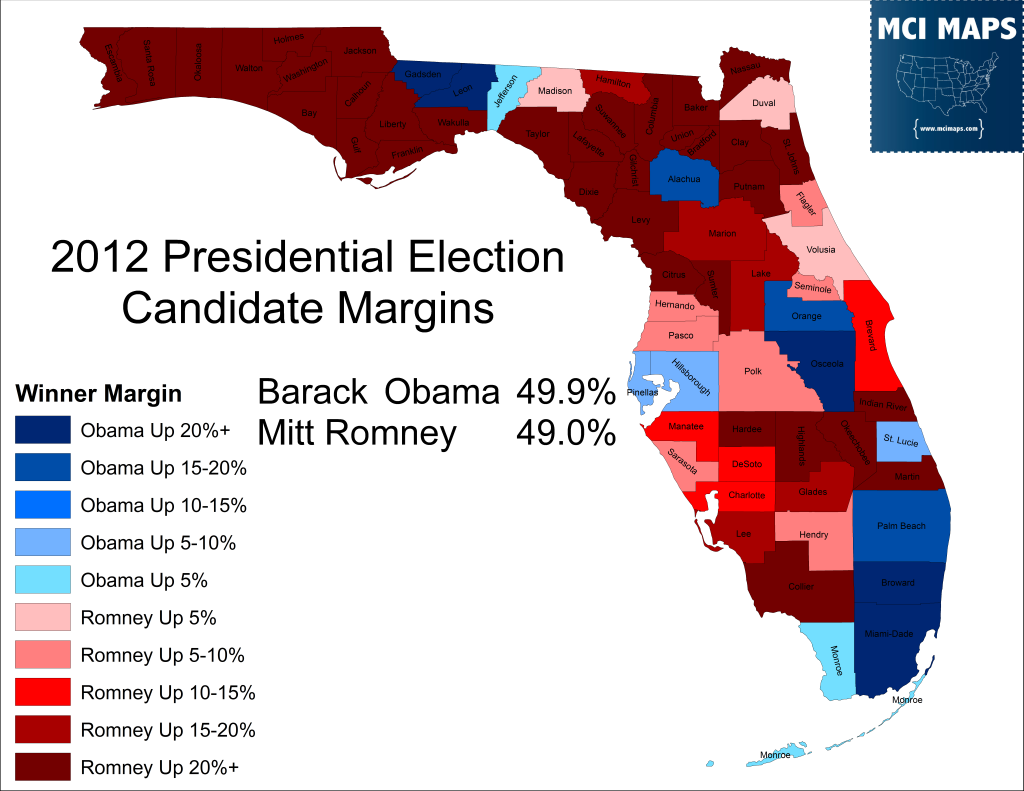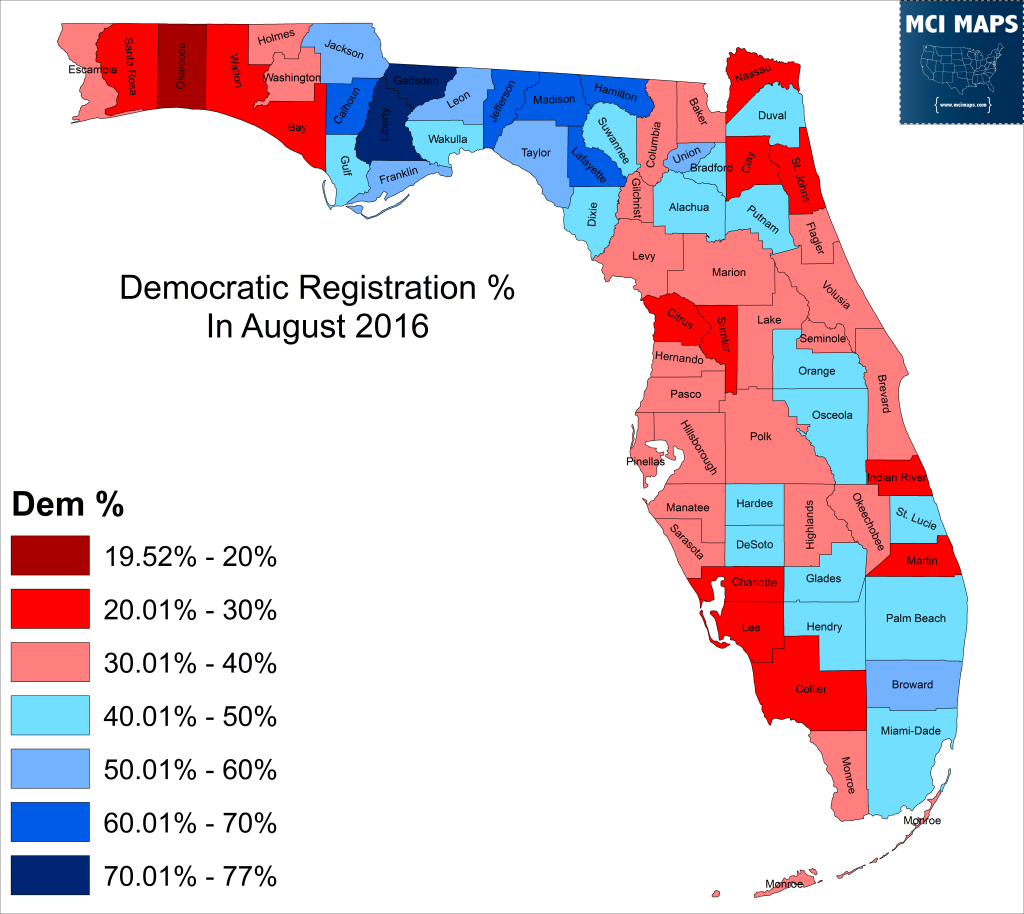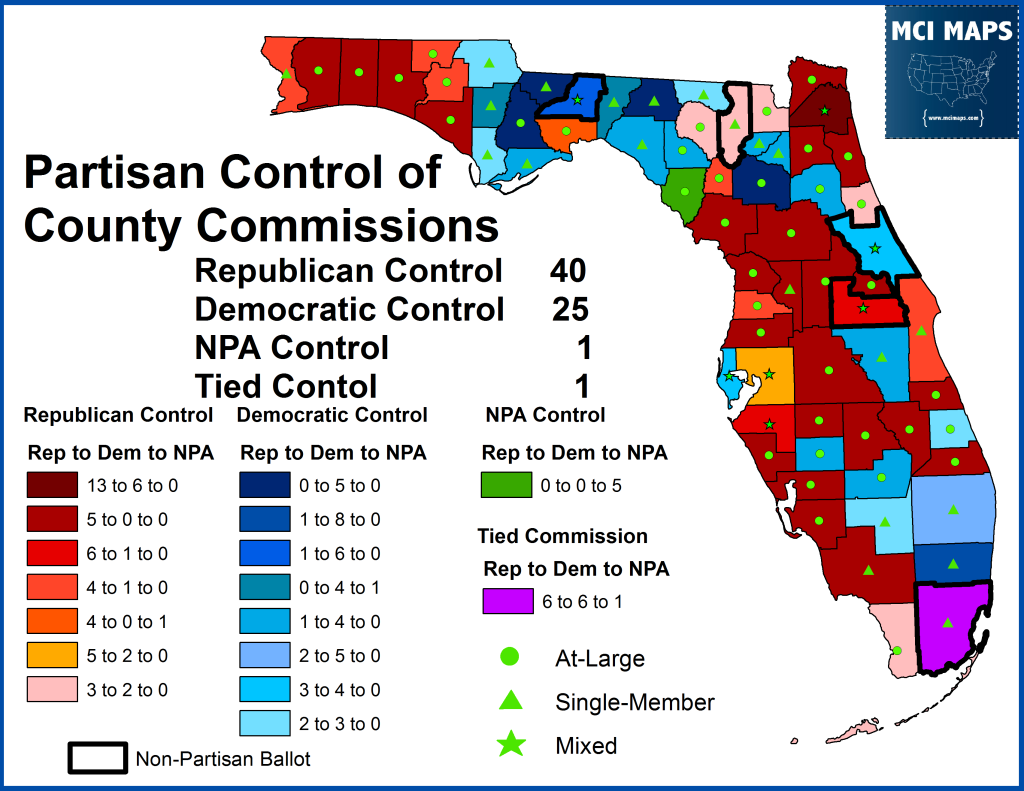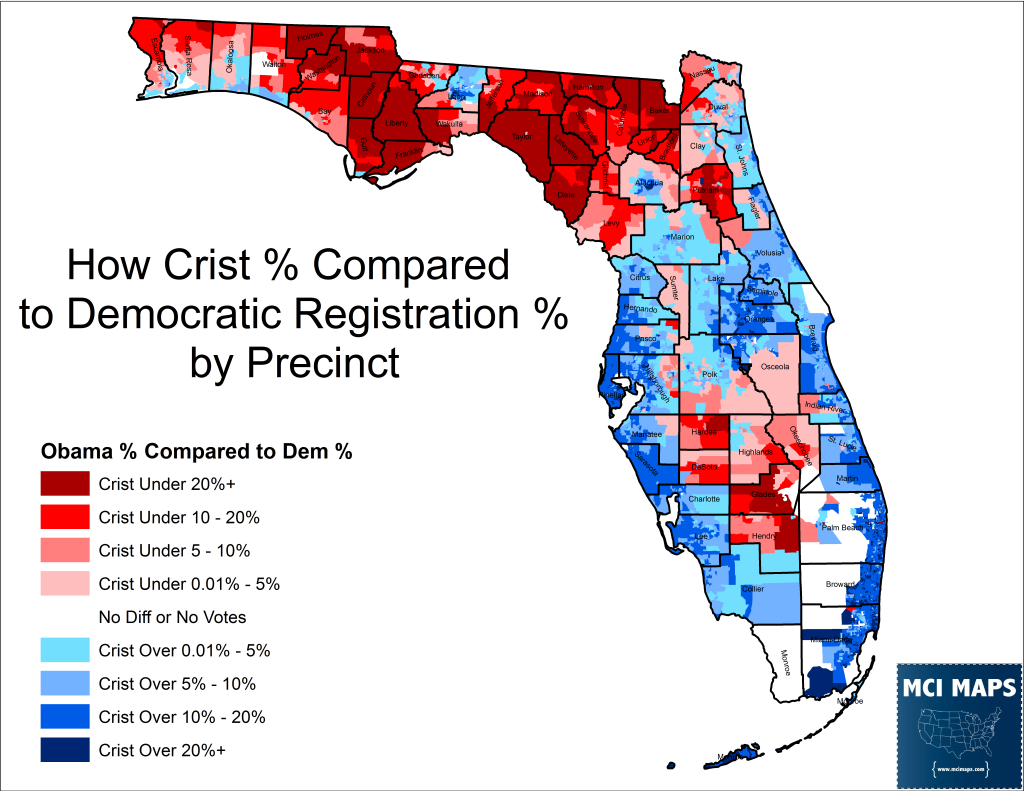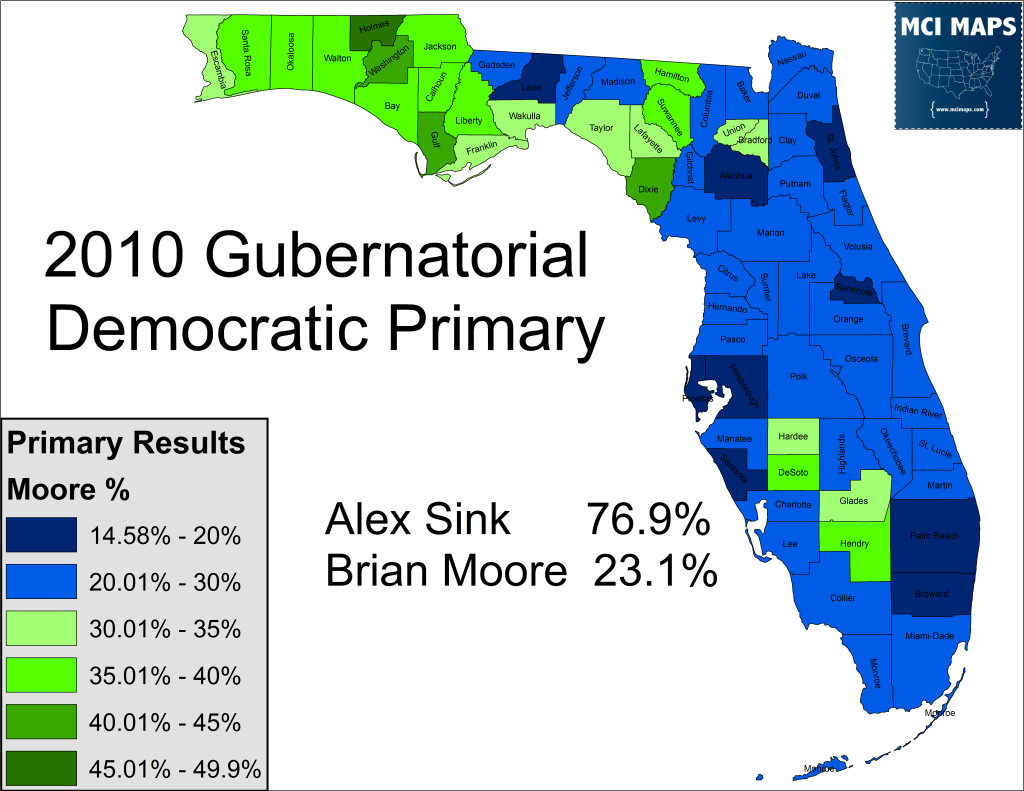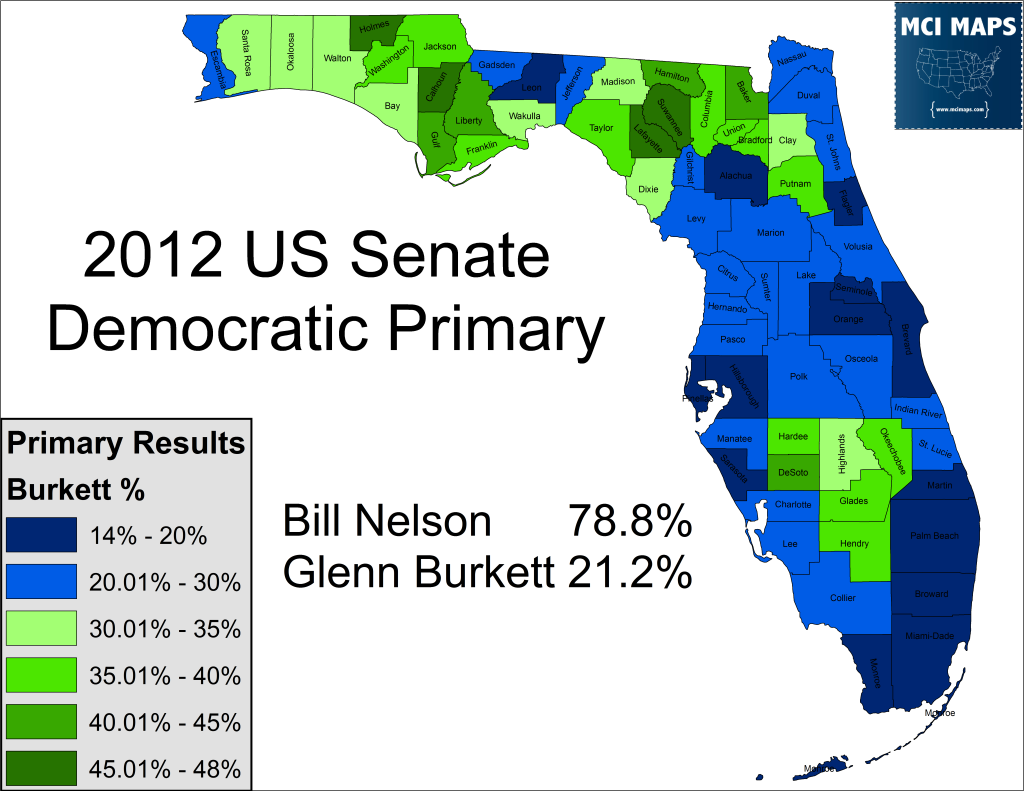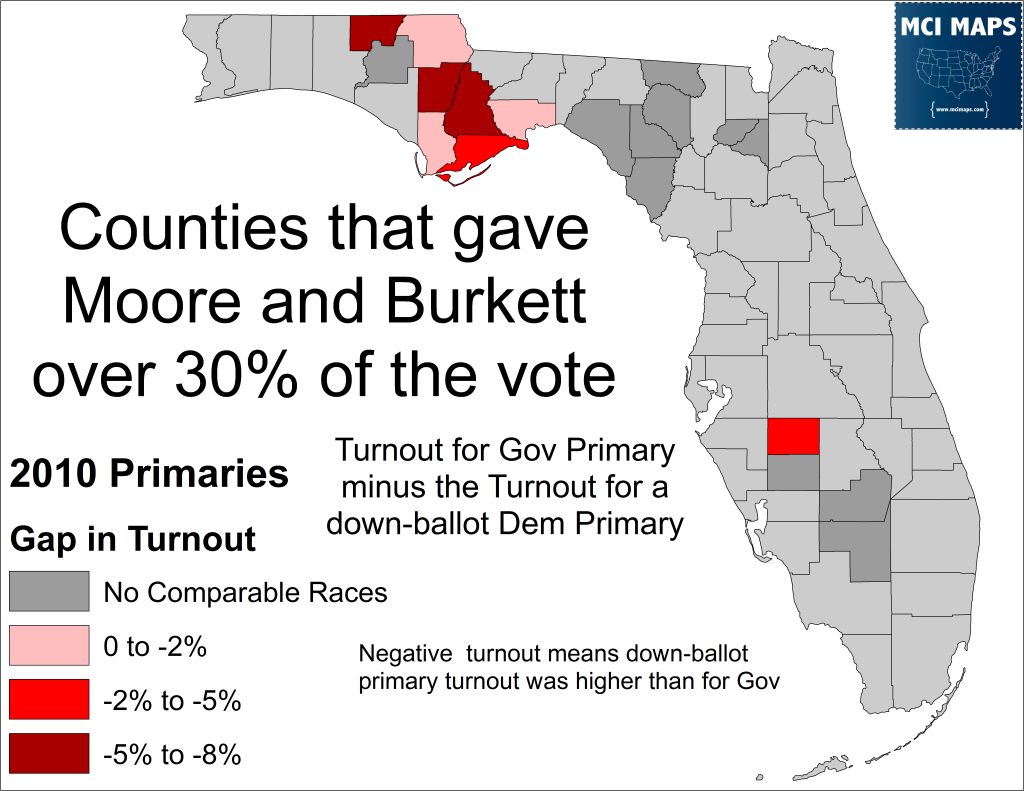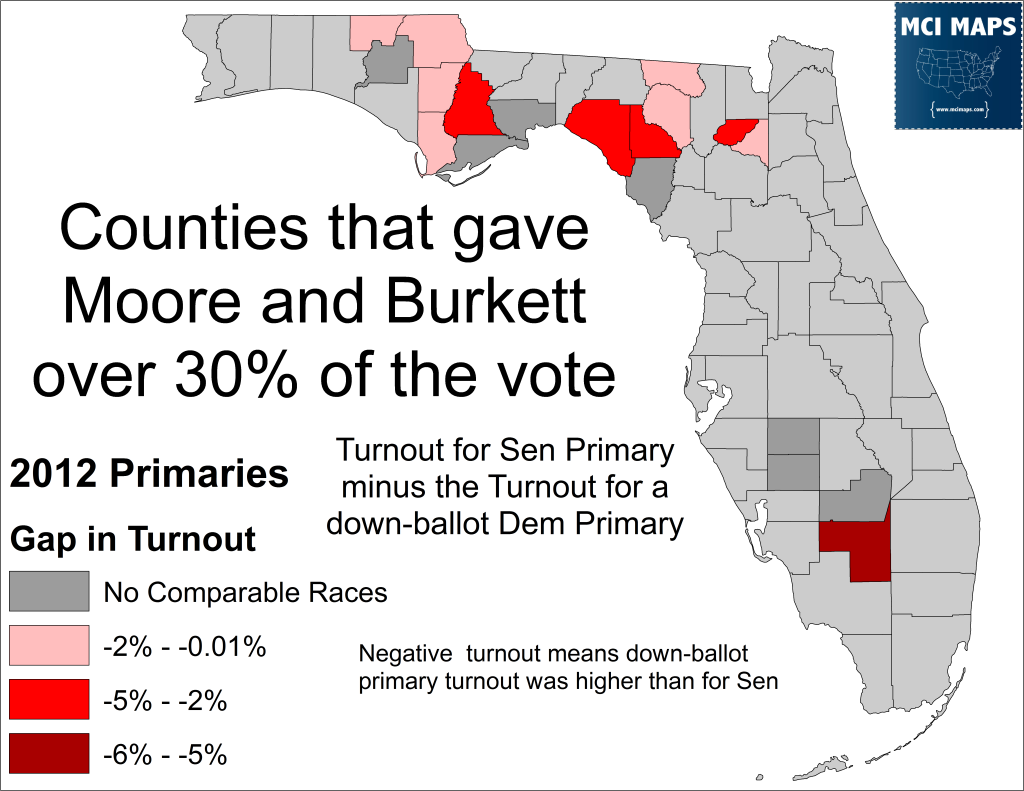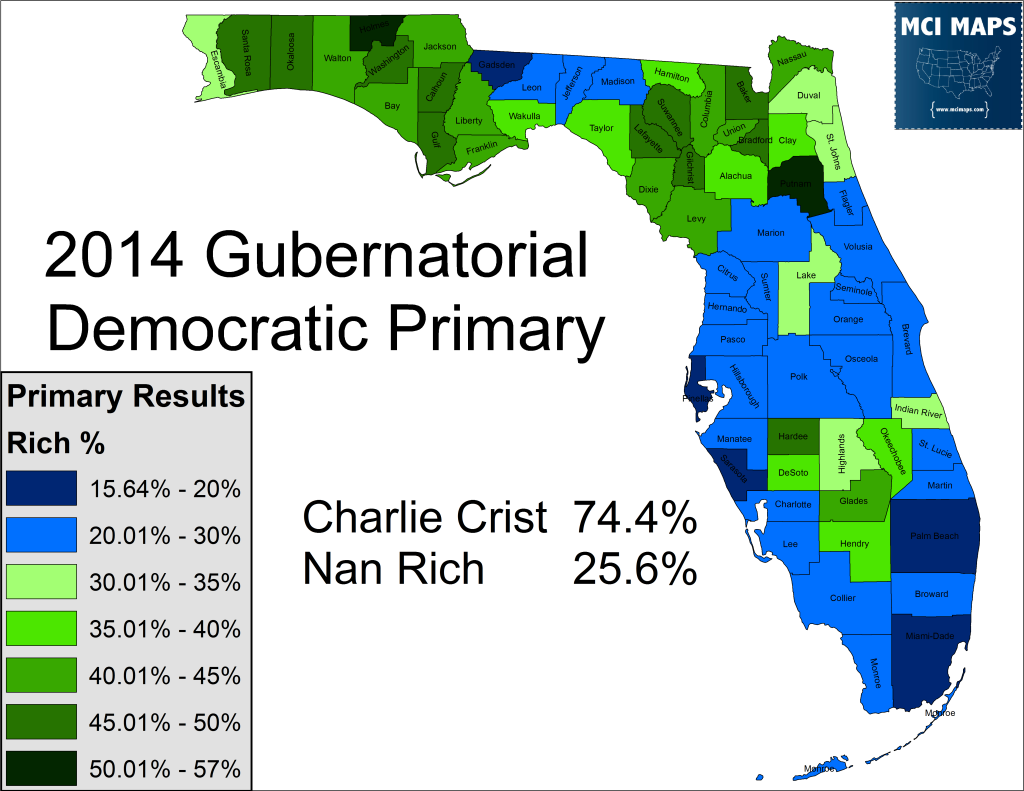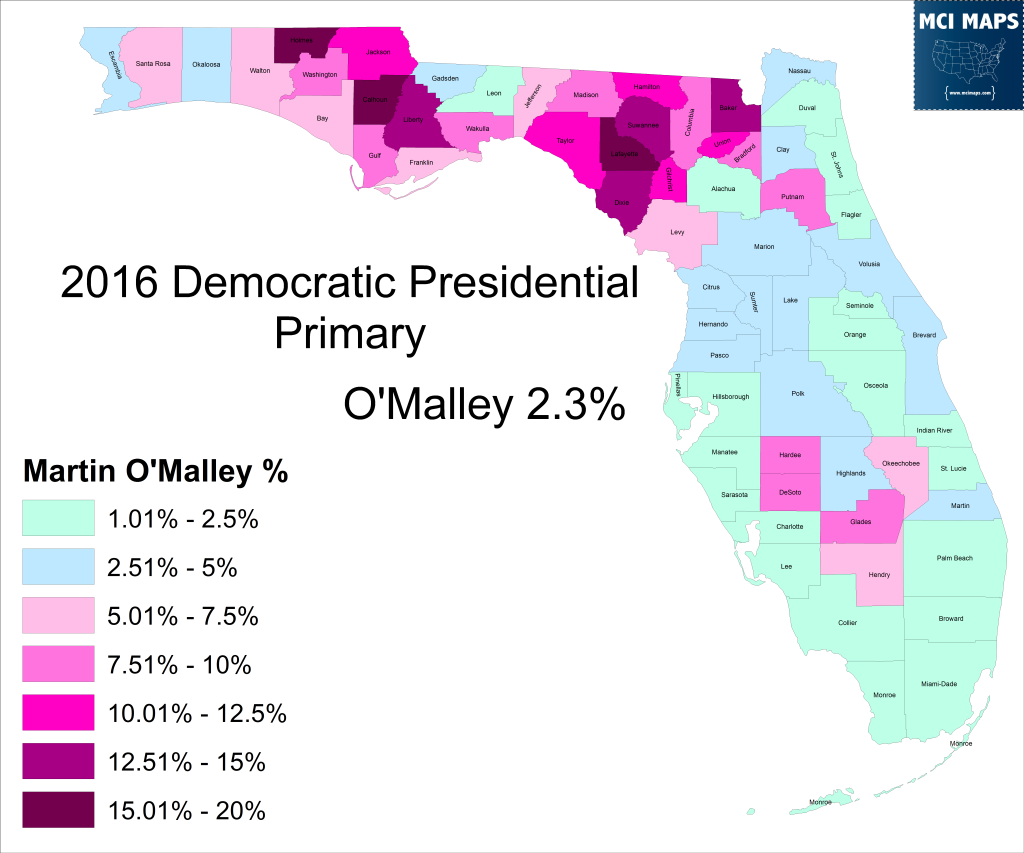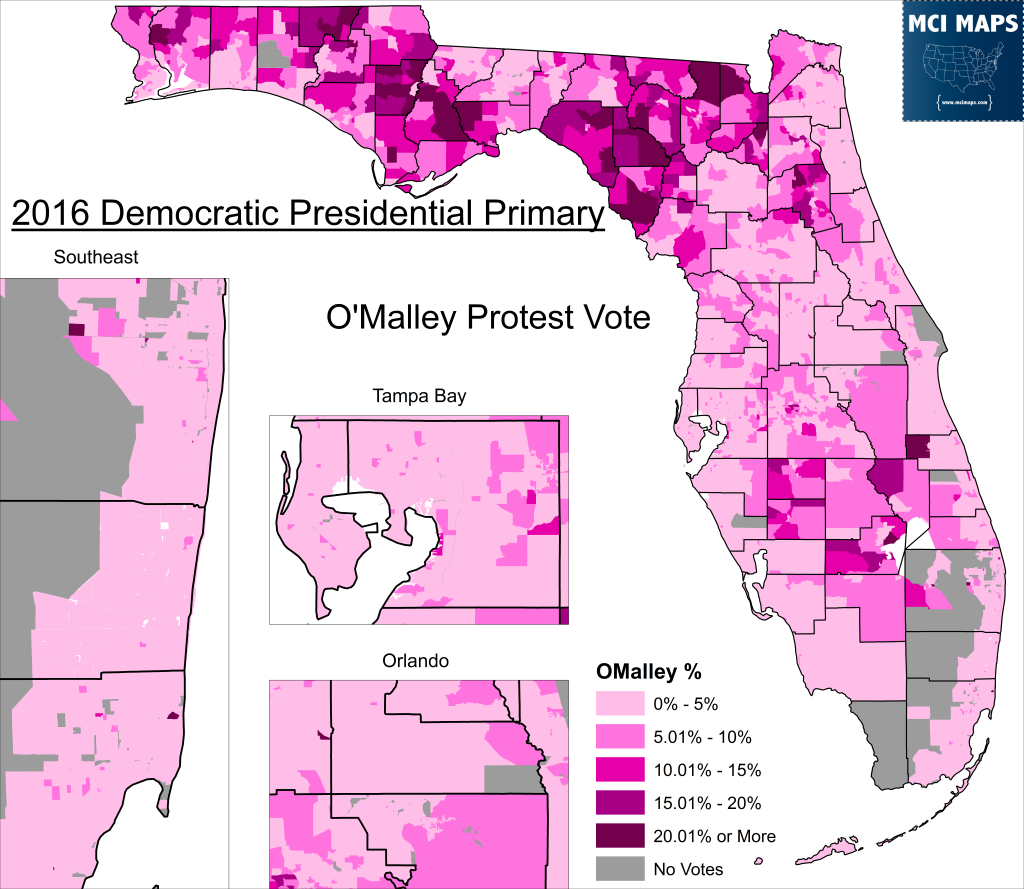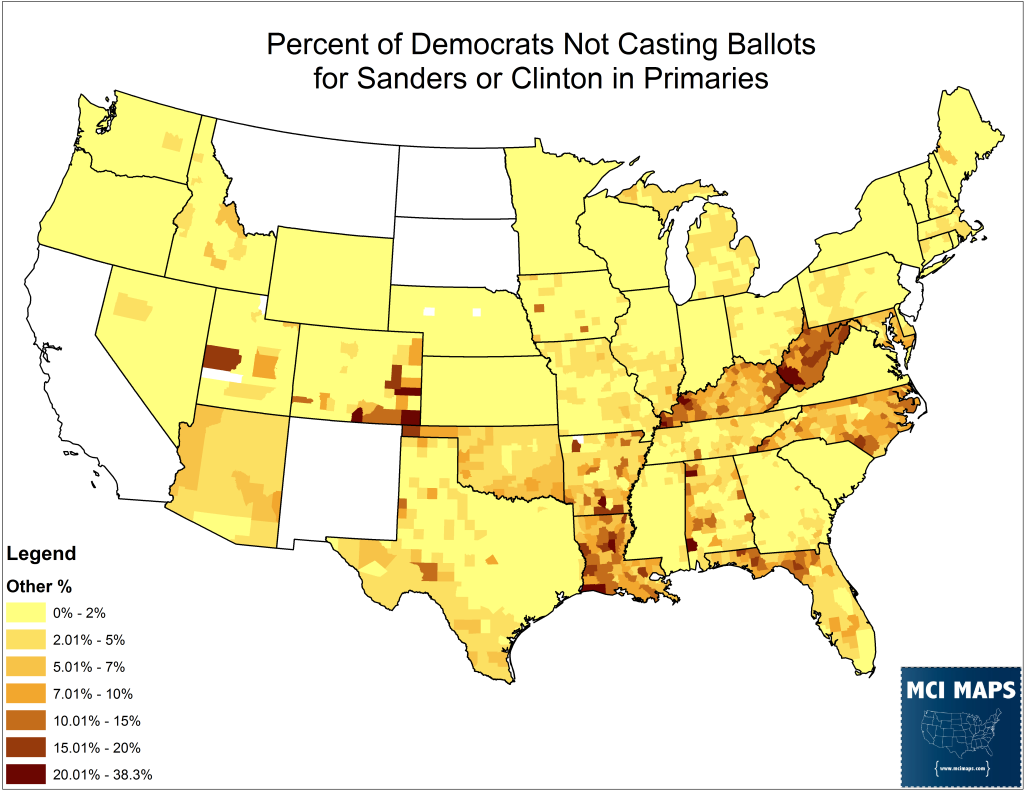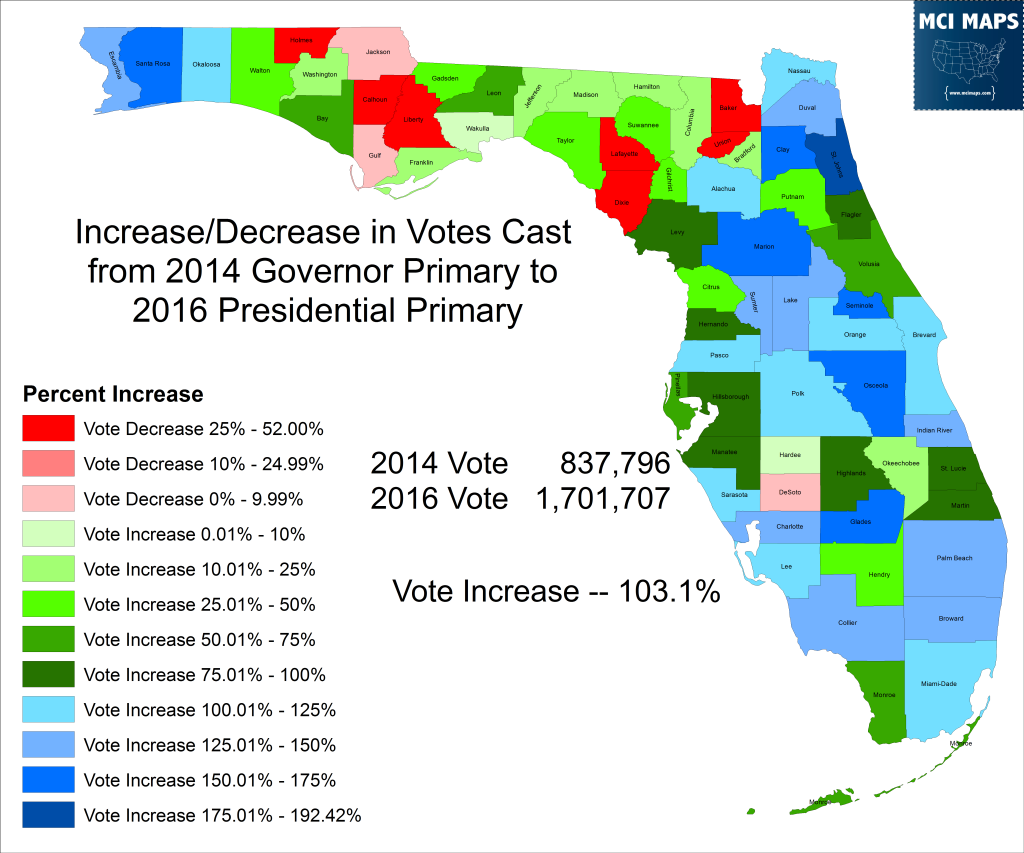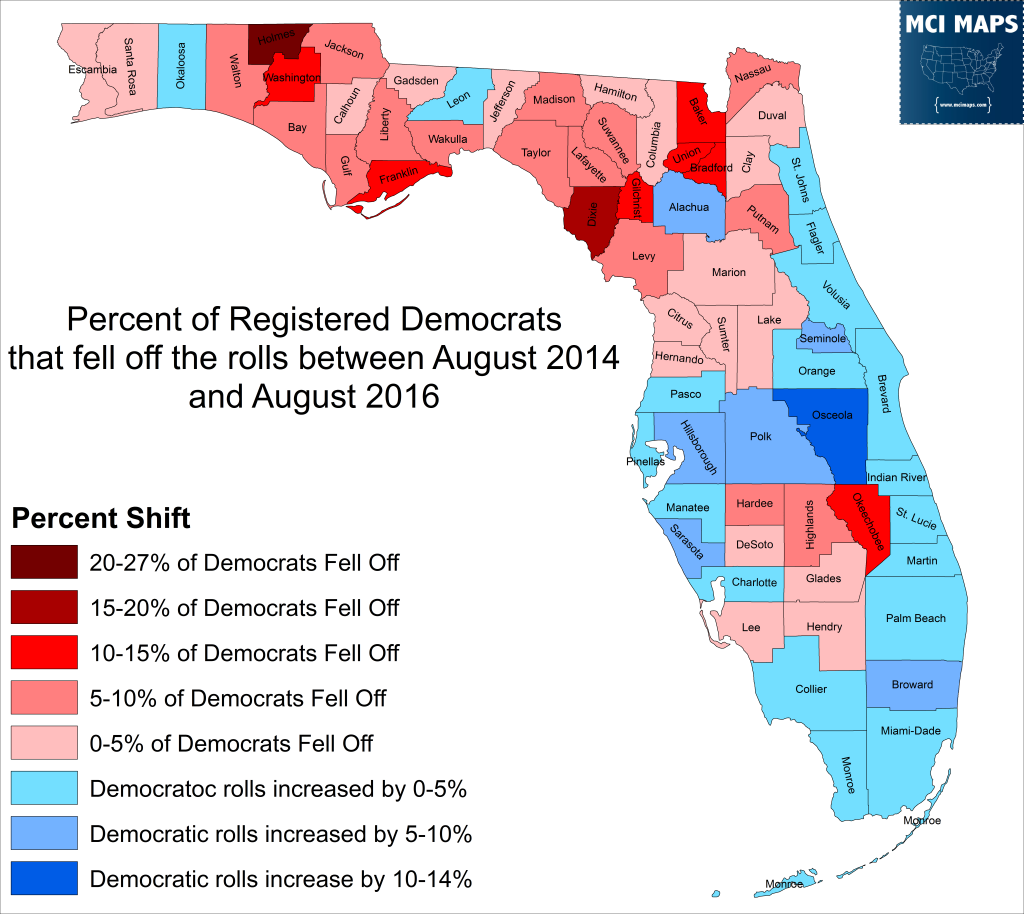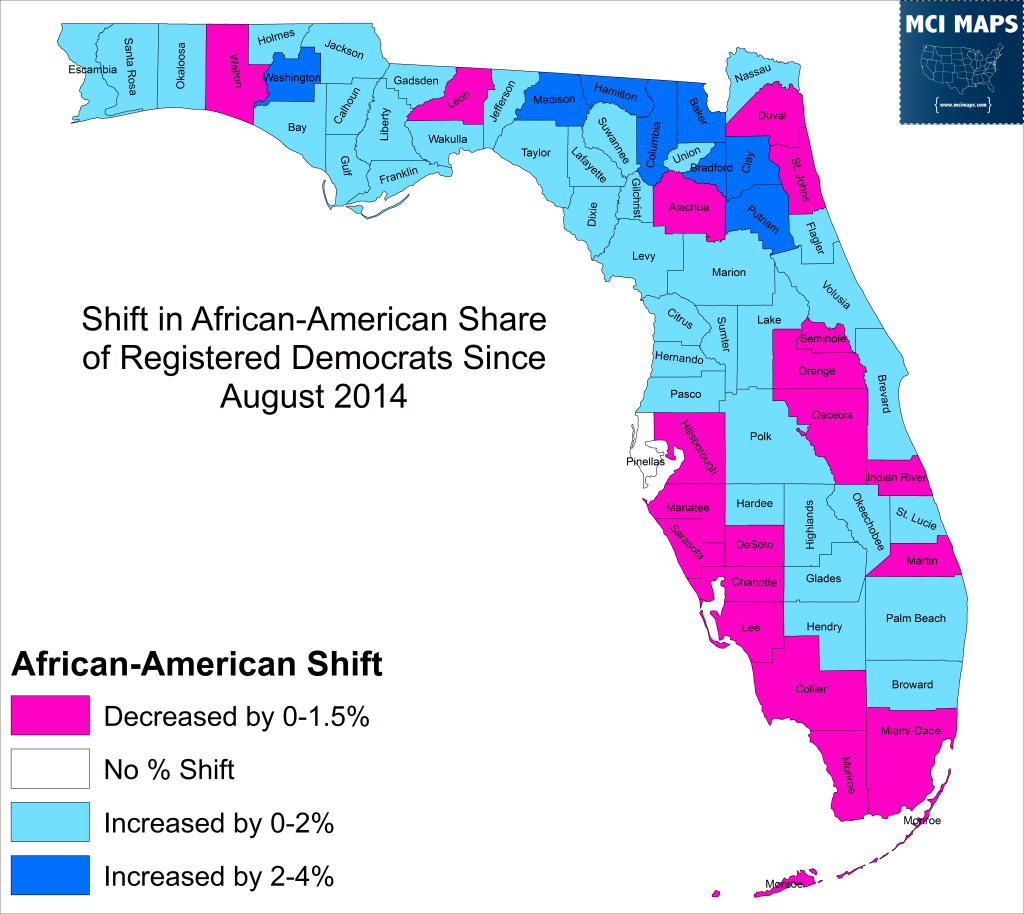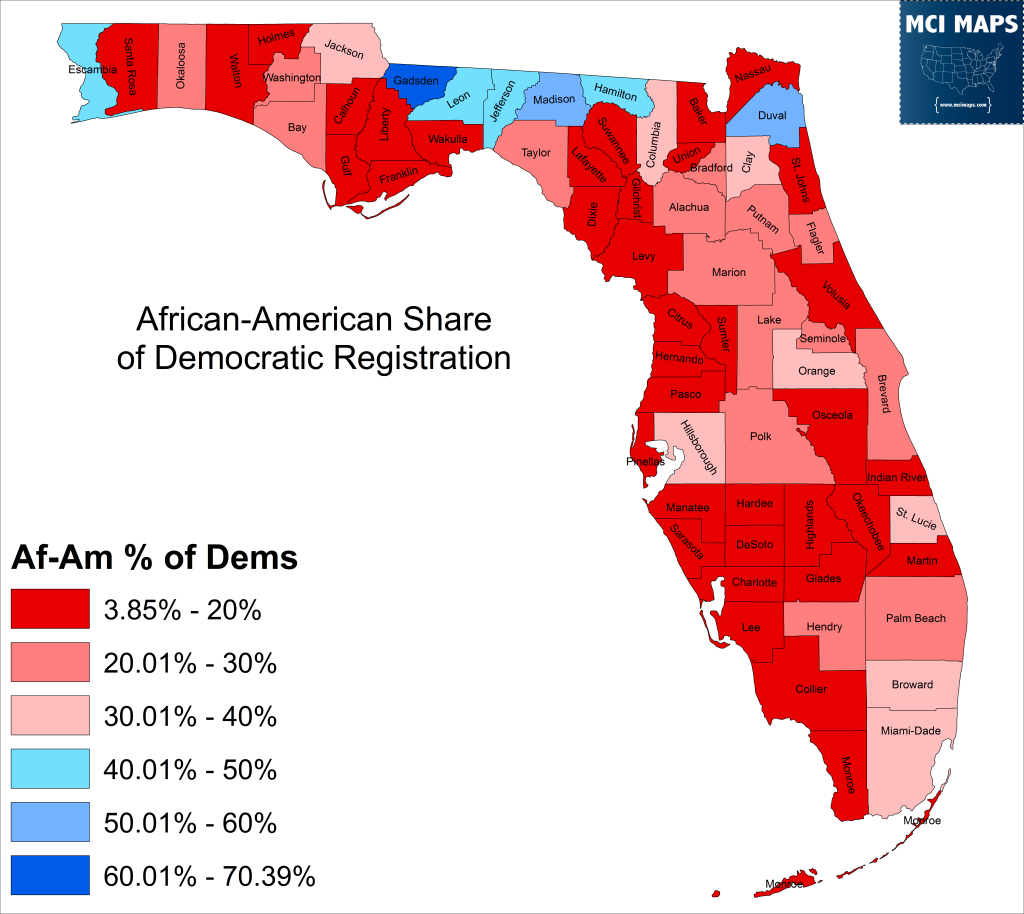On the night before the 2014 Democratic Gubernatorial Primary, I correctly predicted that Nan Rich would do best in the rural panhandle of Florida. My prediction was based off a recent history of unknown candidates doing very well in the panhandle as a way of conservative, southern democrats casting protest votes. My logic was simple: conservative rural democrats in these counties show up to vote for local offices, where Democrats still maintain control, but reject the well-known Democrats for top-of-the-ballot races because they plan to vote GOP in the fall.
I believe that we will see this same phenomenon in the US Senate Primary on Tuesday night. Patrick Murphy is expected to beat Alan Grayson with ease. However, the three other candidates: Pam Keith, Rocky De La Fuente, and Reginald Luster — all unknown to the average voter — will do especially well in the the rural counties of Florida as part of conservative Democrats’ strong tradition of casting protest votes. Pam Keith has impressed Democratic activists as she travels the state and may serve as a liberal alternative to the collapsing Grayson. However, she fits into the Nan Rich mold, liked by party activists but unknown to the hundreds of thousands that will vote.
The Paradox of the Panhandle
If you looked at a Presidential map, you would think the panhandle of Florida, outside Tallahassee’s metro zone, was a bastion for Republicans up-and-down the ballot.
The region is deep red, with Romney wracking up over 20% margins. However, a look at the party registration tells a very different story.
Democrats still leads in registration in a large chunk of the middle panhandle of Florida. This data is even post several years of Democratic decline in the region. Democrats also hold a registration advantage in a slew of farm counties around and to the west of Lake Okeechobee. In addition to registration, Democrats also hold control of many of these rural county commissions.
Democrats maintain a presence at the local level. However, their fortunes on the top of the ballot are not as bright. Both Barack Obama and 2014 Gubernatorial candidate Charlie Crist got smaller shares of the vote than the democratic registration across North Florida and in the farm counties.
Both Obama and Crist under-performed the Democratic registration, often by large margins, in the rural counties. Massive party defections to Rick Scott and Mitt Romney took place in the North and in the Okeechobee region.
These rural Democrats may still show up and vote for their local Democratic commissioner or Sheriff, but they have long left the national and state party. This means a high prospect of a protest vote in state/federal primaries.
The Protest Vote: 2010 to 2014
My prediction of a Nan Rich protest vote was based off the 2010 Gubernatorial Primary and the 2012 Senatorial Primary. In both cases, Sink and Nelson beat unknown challengers with over 70%, Meanwhile, these challengers did relatively well in the North and rural farm counties.
Both Moore and Burkett, random challengers that were actually more liberal than Sink or Nelson, got over 30% and 40% in rural farm counties by Lake Okeechobee and in the rural panhandle counties. At the same time, these counties often saw the vote total for local races end up higher than those cast for governor.
I predicted that Nan Rich, a strong liberal but unknown to most voters, would get the same treatment in the panhandle and rural counties. When the votes were cast, that turned out to be exactly the case.
I did a follow-up article a few days later, showing how Rich’s best regions where filled with conservative Democrats that voted GOP in the fall.
2016 Presidential Primary
Democrats have already seen a protest vote in 2016. During Florida’s Presidential Primary, Martin O’Malley, who had dropped out over a month ago, received large vote shares in the panhandle and farm counties.
O’Malley, a forceful liberal, got over 10% of the vote in many conservative counties, all the while receiving scant votes in the major urban and suburban Democratic sectors.
O’Malley got less than 5% of the vote in almost every precinct in the Southeast, Tampa Bay, or Orlando regions. His best showings were in rural conservative-dem areas.
North Florida behaved similar to other regions of the country that have large conservative Democratic pockets (and closed primaries that dont allow these Democrats to vote on the GOP ballot). When conservative Democrats are forced to vote the Democratic side for federal races, they leave it blank or vote for the candidate they don’t know as a protest.
Conservative Democrats who showed up opted to back O’Malley. But evidence indicates many didn’t show up at all. The Presidential Primary had twice the turnout of the 2014 August Primary for Governor. However, in the rural counties the turnout was barely up at all; even DOWN in several counties.
While the major liberal counties saw major vote increases, turnout was much weaker in the conservative democratic counties.
With only the Presidential Primary on the ballot, conservative Democrats had little reason to show up. This likely explains why the O’Malley vote wasn’t as high as Rich/Moore/Burkette. Another factor is likely Sanders getting anti-Clinton votes in the North. His best counties in Florida were made up of conservative Democrats as well.
The Future of the Protest Vote
The protest vote in Florida’s northern panhandle will not last forever. As conservative Democrats switch parties or pass away, these rural counties grow more Republican. GOP gains in panhandle have been a constant every year. Just since 2008 the the gap between the two parties are worsened for Democrats across the North. Across the panhandle, Republicans have narrowed the gap with Democrats, or widened a narrow advantage.
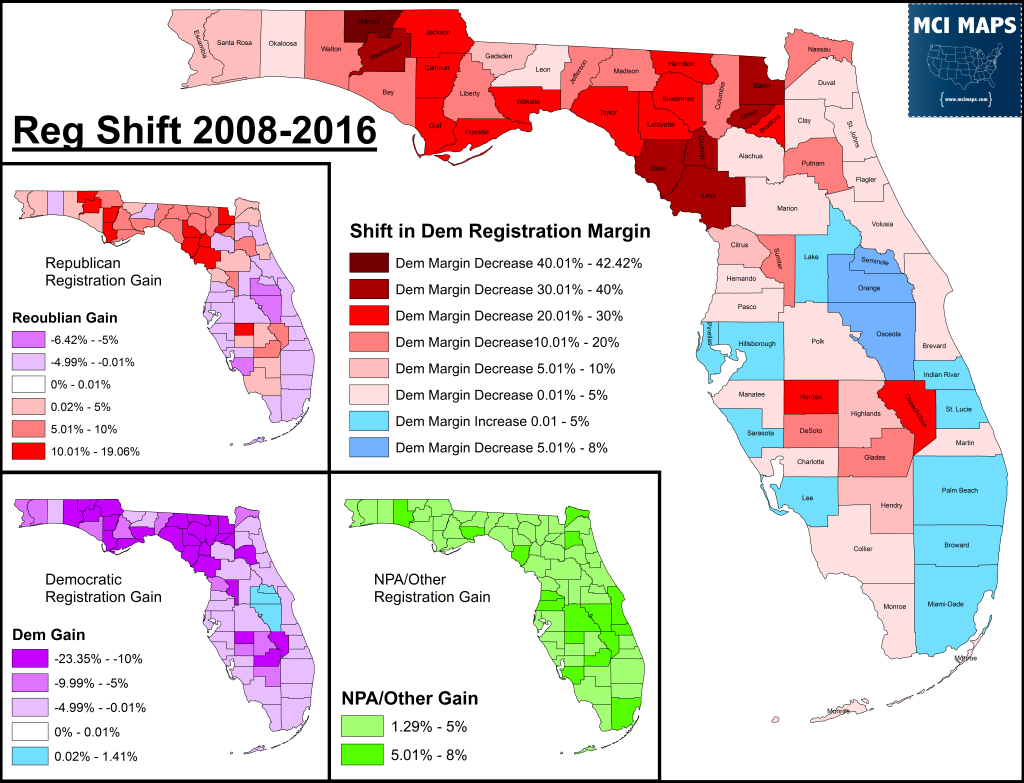
Just since 2014, the Democratic registration numbers have fallen in rural counties. Counties like Holmes have seen over 20% of its registered democrats fall of the rolls due to moving, death, or switching to the GOP.
It should be noted that even in counties were Democratic share of the vote decreased, they still saw the number of Democrats rise (just not rise as much as NPAs or Republicans). These red counties above are where the raw number of Democrats actually fell. A large portion of this drop is white, conservative Democrats. The result has been African-Americans, a group with little protest vote history in the primaries, growing in their share of the Democrats in the North.
However, many of these rural counties are heavily white, so the overall African-American share of their Democratic vote remains low.
As these counties maintain a rural, white Democratic base, the protest vote will hold. However, as the Democratic rolls shift with each year, the primary electorate will get less conservative, and the protest vote could slowly fade.
Conclusion
Keep an eye out on Tuesday for large shares of the vote going against Murphy and Grayson in the panhandle and the farm counties. The combination of Keith, Fuente, and Luster could top 30 or 40% in multiple rural counties. Many observers will be shocked by this result, but in reality it will simply be the latest example of Florida’s quixotic protest vote.

